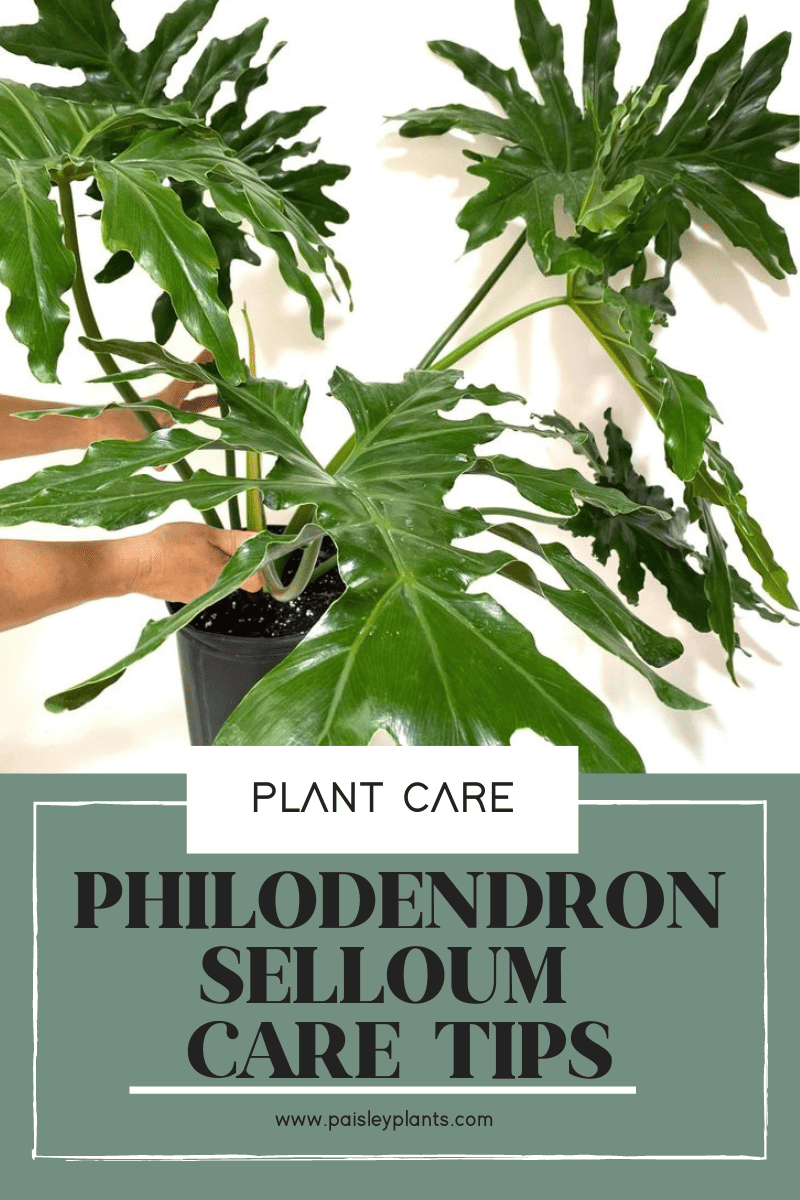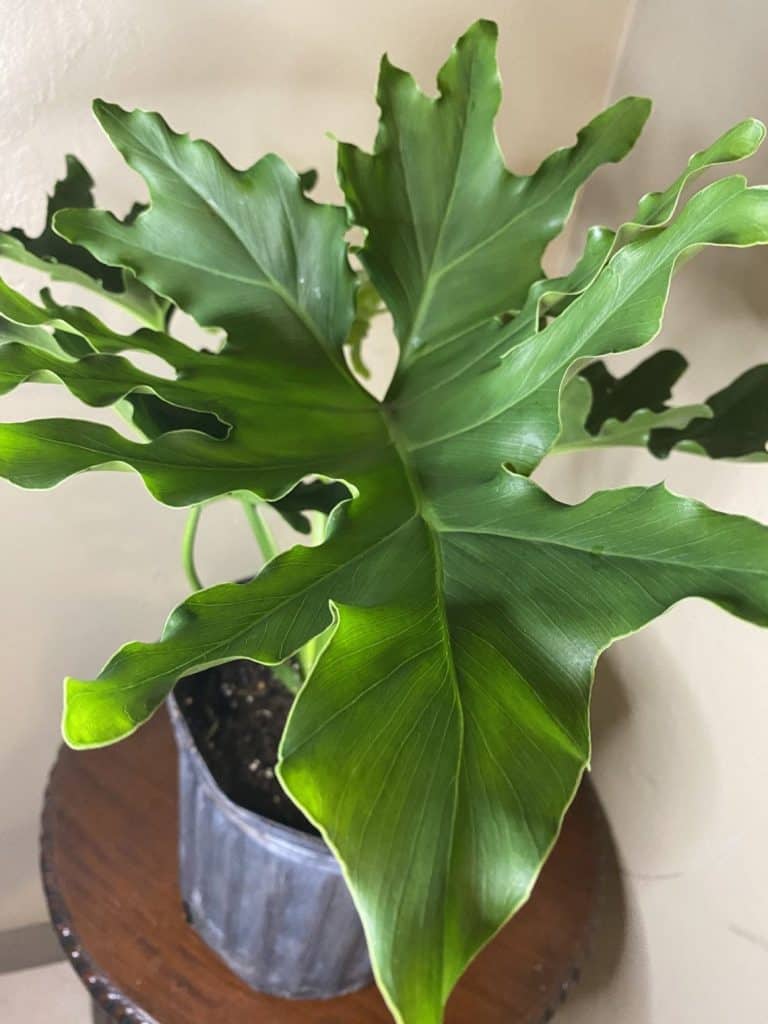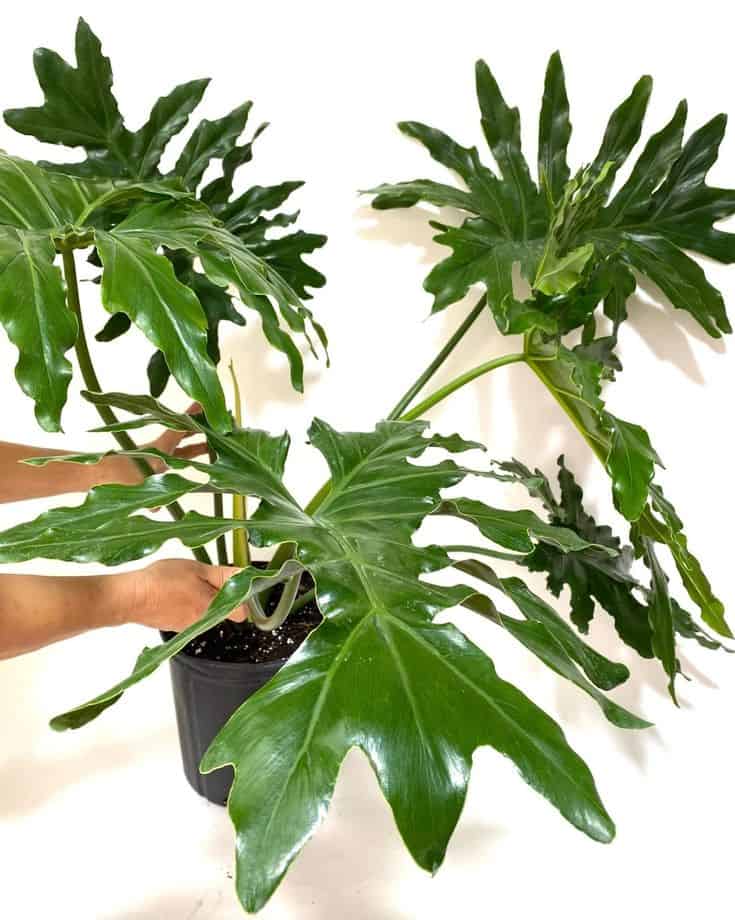If you’re lucky enough to have a spacious home with a lot of space or simply a place to grow large size plants, the Philodendron Selloum plants might be a good choice for you. This plant is an awesome way to enhance your environment and give it a tropical look.
Table of Contents
Philodendron Selloum Background and History

The Philodendron Selloum is native to South America. This tropical plant is found mostly in Brazil, Bolivia, Argentina and Paraguay. It has also been cultivated as a tropical, subtropical and landscape plant in warm temperate climates such as the southern states of the United States.
There are several common names that the Philodendron Selloum is also commonly known by. They are Lace Tree Philodendron, Lacy Tree Philodendron, Split-Leaf Philodendron, Horsehead Philodendron and Cut-Leaf Philodendron.
These plants can grow 8 to 10 feet tall and 6 feet wide so be sure you have a spot big enough for it when grown inside! The have shiny, lobed leaves that almost look like fingers! They have huge leaves, almost the biggest of all the Philodendron plants.
Toxicity
As with most other philodendrons, the Philodendron Selloum is toxic to both humans and animals. It contains insoluble calcium oxalate crystals that can cause tissue penetration and irritation when chewed or bitten by a human or animal.
For this reason, your plant should be kept out of the reach of small children and pets. It is only on very rare occasions that swelling of the upper airway occurs making it difficult to breathe, but nonetheless, you should keep these plants away from your small children and pets.
Philodendron Selloum Care

Image via Tropical Plants FL (You can also buy this one there too!)
Water Requirements
You will find that one difference between most philodendrons and your Philodendron Selloum is that they don’t like standing in dry soil between waterings. For this reason, you will want to maintain a regular watering schedule such as once a week.
This plant prefers slightly moist soil, but not soggy soil. When you water your plant, make sure to slowly water the area around the central roots to keep your Selloum well hydrated. These plants are sensitive to overwatering which can lead to root rot, so be careful! Always be sure your pot has drainage holes so excess water can get out.
Light Requirements
Philodendron Selloum prefers bright indirect light. They will be able to tolerate some direct sunlight, but if they get too much it can burn or scorch their leaves, so be careful. The hot afternoon sun can be too harsh.
If you are wondering if your Philodendron Selloum is getting enough light, you can usually tell this way. The stems will continue growing, but the leaves won’t. This will lead to having a leggy looking plant. Be sure to keep the light source consistent to prevent this happening.

Image via Eureka Farms LLC
Soil Requirements
The Philodendron Selloum grows best in a rich, quick draining, loamy soil. It should also be slightly acidic with a PH between 5.0 and 6.0.
If you would like, you can mix your own potting soil mix by using a well draining, regular potting soil. You can mix organic matter such as perlite or pumice and orchid bark or coconut coir into it to provide the perfect balance of moisture retention and aeration.
Fertilizer Requirements
Your Philodendron Selloum does like fertilizer. For best results, use a diluted liquid fertilizer. Be sure to mix this according to package directions when preparing. You should use it once a month and don’t water your plant one day prior to fertilizing to give the plant a chance to absorb the fertilizer.
You can also use a slow release type of fertilizer once a year when you repot your plant. This will allow your plant to receive the necessary nutrients when freshly repotted. Be sure to not over-fertilize though as too much plant food can cause excess salt to build up in the soil and can cause leaf burn.

Image via Eureka Farms LLC
Temperature and Humidity Requirements
When you grow a Selloum outdoors, the native environment temperatures range anywhere between 68 to 105.8 degrees F. Of course, if you are growing your plant as an indoor plant, the temps most likely won’t get this warm.
They can also tolerate slightly cooler temps as long as they are protected from frost. Always keep them away from A/C or heating vents as these can make for less than ideal growing conditions for your plant. You do want to remember to keep your plant out of direct sunlight even though they enjoy and grow best in warm temperatures.
As far as humidity levels go, your Selloum will do best in moderate humidity between 40% and 60%. This is an average level for most homes, but if you need to increase the humidity level, you can do so with a humidifier or a pebble tray beneath your plant.
Pests and Diseases
For the most part, these plants are pest free. However, they can be infested with mealybugs, scales, aphids, and spider mites. You will need to be sure to inspect your plants on a regular basis to ensure there are no pests in order to keep your plant healthy!
If you do discover any type of pest on your plant, the first thing you need to do is isolate your plant from your other ones. You will need to treat your plant accordingly for whichever disease is present. There are options for using either natural or chemical treatments, depending on which you prefer.
You can research online how to rid your plants of pests and/or diseases. There are many ways to do this and some are commercial products and others are homemade. You will need to decide which you prefer and which are the best ones for your needs.
Pruning and Repotting
If you decide to prune your Philodendron Selloum, the best time will be during the spring and summer months. This will allow your plant plenty of time to grow during the main growing season once you prune it back.
You can trim the leaves at the end of the stems, but this will leave bare stems. However, new shoots should develop in a matter of weeks. You can also trim the top of the plant stem just above a node where new growth can start. This will make for a bushier plant. Stem cuttings can also be propagated to create new plants!
If the roots of your Philodendron Selloum begin to grow out of the bottom of the pot, this is a good indication your plant needs to be repotted. Also, if you notice it is starting to grow slower, it should be repotted.
Most of the time, a Philodendron will outgrow its post every two to three years. When you repot it, be sure to use a new pot that is at least one to two inches larger than the current pot. This will allow the roots to spread and get the oxygen they need. Also be sure to use fresh potting soil as the plant will get most of its nutrients from the soil.
Common Problems
My Plant is Growing More on One Side than the Other
This can be caused from the plant bending toward the sunlight. If this happens, it’s a good idea to be sure you rotate your plant on a regular basis. It will naturally grow toward the light source, so keep this in mind as you choose its placement.
The Leaves are Turning Yellow
Yellow leaves can be caused by either over or under watering your plant. You will have to take some time to decide whether you are over or under watering your plant, but once you figure it out, you can solve the problem easily.
My Plant is Getting Too Large
If you have your plant in an ideal place, it may just grow and grow! If this happens, you may just need to prune back the foliage on it. Or, if you have a large enough house, you can move it to another room to allow it to keep getting bigger and bigger. It all depends on what options you have where you live, of course!
FAQs
Too much salt in the soil may be the problem. This can be caused by over fertilizing your plant. It can also be caused by using water to water your plant that has passed through a water softening system. Dilute your plant food to ½ the recommended strength to help solve this problem. Soaking the soil with distilled water and feeding it less often can also help solve this problem.
This can happen either when your plant is getting too much bright light or when it needs more fertilizer. Be sure to check your feeding schedule or adjust the amount of fertilizer you are using. You may also have to move the plant to a different location to keep it from getting too much sunlight.
This can occur when the plant is sick and it will eventually rot and die. The best way to prevent this from happening is to keep the leaves dry at all times, which may mean watering your plant at soil level or bottom watering it. Also, always be sure to remove any infected leaves from the plant immediately.
In Conclusion
If you’ve never seen one of these beautiful Philodendron Selloums, I would suggest taking a look at one as an exquisite addition to your plant collection. The unique shape of the leaves themselves give it an exotic and tropical feel to any room.
This large plant also have air purifying qualities and help filter contaminants such as formaldehyde from the air. This can help improve the air quality in any indoor environment. With their easy care and beauty, I say it is a win-win for every plant parent! As always, keep on growing!
